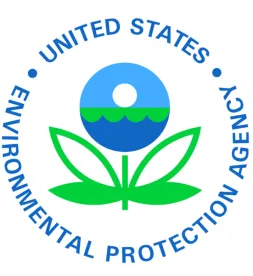Last week, three industry groups filed challenges to EPA’s final rule amending the agency’s Regional Consistency Regulation in 40 CFR Part 56.[1] The final rule, which was issued on August 3, 2016, addresses the question of how to treat Federal court decisions regarding locally or regionally applicable actions that may affect EPA’s ability to apply its national programs, policies, and guidance consistently. Notably, the rule is substantively flawed and simply unfair. EPA wants to have its cake and eat it too. The agency’s rule limits decisions adverse to the agency to a particular region of the country, while still allowing the agency to apply favorable decisions nationwide.
EPA undertook the revisions to the Regional Consistency regulations, in part, to respond to a 2014 D.C. Circuit Court of Appeals opinion[2] that vacated a 2012 memorandum from EPA headquarters to the EPA regions that limited the application of a Sixth Circuit Court of Appeals opinion to those states under the jurisdiction of that court.[3] EPA has historically followed this practice (known as intercircuit nonacquiescence) with regard to decisions issued by both circuit and district courts that stem from locally or regionally applicable EPA actions. However, the National Environmental Development Association’s Clean Air Program challenged EPA’s application of the practice in the 2012 memorandum as inconsistent with the Regional Consistency regulations and with the CAA by establishing inconsistent permit criteria in different parts of the country, and ultimately prevailed.
In response to the D.C. Circuit’s opinion, EPA chose to revise the Regional Consistency regulations. The recent final rule makes three amendments to the Regional Consistency regulations to create a “narrow procedural exception under which an EPA regional office no longer needs to seek headquarters concurrence to diverge from national policy in geographic areas covered by such an adverse court decision.” Under the revised regulations, the exception will apply to decisions of a federal court that arise from a challenge to “locally or regionally applicable” actions. These decisions will not apply uniformly nationwide. Instead, only decisions of the U.S. Supreme Court and the D.C. Circuit that arise from challenges to “nationally applicable” regulations or agency actions will apply uniformly nationwide.
EPA relies on a number of justifications for its decision to revise the regulations to accommodate intercircuit nonaquiescence. The agency contends that the revisions advance the federal judiciary’s ability to experiment with different approaches to similar legal problems and that such experimentation can create a circuit split and ultimately lead to resolution of an issue by the U.S. Supreme Court. EPA believes that compelling the agency to follow the adverse ruling of the first circuit court to decide an issue gives that court undue influence over the agency in a way that is not appropriate under our federal judicial system. The agency contends that the revisions are consistent with the CAA’s judicial review provision (42 U.S.C. § 7607(b)), through which Congress already balanced the competing interests of national uniformity and continued development of the law by assigning certain cases to the D.C. Circuit and others to local circuits. EPA also contends that the issue at the heart of these revisions simply was not contemplated by the agency when it developed the Regional Consistency regulations, and it argues that changing the regulations to address the issue promotes predictability and accounts for district court rulings, which by their very nature are intended to be limited in application. Finally, EPA argues the revisions will allow it to exercise its discretion—the agency can always adopt new national policy in response to particularly persuasive judicial opinions addressing challenges to “locally or regionally applicable” rules or actions.
The petitioners are expected to argue that the rule is unnecessary and does not promote the consistency, uniformity, and fairness required by CAA § 301(a)(2), and, moreover, that EPA lacks authority for the rule. They will also likely claim that the 2014 D.C. Circuit opinion neither requires the agency to revise the Regional Consistency regulations, nor does it condone applying the CAA differently in different parts of the country. Comments to the proposed rule also raised the concern that the EPA Administrator cannot inconsistently delegate her authority to the regional administrators (which might result from inconsistent application of an adverse judicial opinion). Finally, the industry groups may argue that EPA’s rule conflicts with the CAA’s judicial review provisions, which already indicate which federal court opinions are to be applied nationwide and which are not.[4]
Strong arguments are expected that the final rule is unfair, creates an unequal playing field, and only benefits EPA; that the regulated community nationwide should be subject to the same rules; and that different environmental standards will emerge throughout the country. Inconsistent application of the Clean Air Act is contrary to the plain language of the statute. It represents bad government policy and a power grab that the D.C. Circuit must step in and stop.
[1] Nat’l Envt’l Dev. Assoc. v. EPA, No. 16-1344 (D.C. Cir. filed Sept. 30, 2016); Am. Petroleum Instit. v. EPA, No. 16-1345 (D.C. Cir. filed Oct. 3, 2016); Air Permitting Forum v. EPA, No. 16-1346 (D.C. Cir. filed Oct. 3, 2016). Nos. 16-1344 and 16-1346 have been consolidated into a single case.
[2] Nat’l Envt’l Dev. Assoc.’s Clean Air Project v. EPA, 752 F.3d 999 (D.C. Cir. 2014).
[3] The Sixth Circuit opinion, Summit Petroleum Corp. v. EPA, 690 F.3d 733 (6th Cir. 2012), addressed the scope of the term “adjacent” as used to determine what is a “source” for purposes of permitting onshore oil and gas industry facilities under the Title V program. EPA has since issued a rule that clarifies the meaning of the term “adjacent” as used to determine the scope of a “stationary source” for purposes of PSD and Nonattainment NSR preconstruction permitting programs and the scope of a “major source” in the Title V operating permit program in the onshore oil and gas sector. 81 Fed. Reg. 35,622 (June 3, 2016).
[4] See Comments of NEDACAP, available at https://www.regulations.gov/document?D=EPA-HQ-OAR-2014-0616-0004; Comments of API and INGAA, available at https://www.regulations.gov/document?D=EPA-HQ-OAR-2014-0616-0013; Comments of the Air Permitting Forum, available at https://www.regulations.gov/document?D=EPA-HQ-OAR-2014-0616-0016.



 />i
/>i

